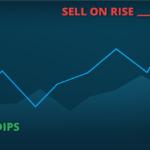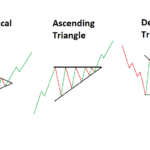Walmart Earnings Under the Microscope
Tomorrow morning, before the opening bell sounds over the heads of NYSE traders everywhere, Walmart will be publishing its quarterly earnings report for the quarter ending March 31st, 2020.
Zacks is expecting $1.12 earnings per share. Down from last quarter’s $1.38, on revenues of about $130bn, down 10 billion from Q4 last year.
The $1.4 trillion multinational retail corporation is still the Walton family’s home-run business, albeit a publicly traded.
A fact that hasn’t prevented them from making $4 million an hour, every hour, based on Bloomberg calculations.
They’ve certainly been luckier than the competition, namely J.C.Penney, Neiman Marcus, Pier 1, and many more who have filed for bankruptcy since the Coronavirus hit the streets.
But the virus is only the latest nail in the coffin of bricks-&-mortar retail. As more and more shoppers go online – whether for health reasons or convenience.
Payless Shoes hit the dirt last year alongside many other apparel and sportswear companies, Sears and Radio Shack the year before. Shopping centres have been closing, many renting out their space to schools and other endeavours for the past 5 years in alarming numbers.

The Retail Industry Sells Shoppers
One may be excused for thinking that the shopping centres began in Ancient Rome’s Trajan Forum, Tehran’s 5-mile long Grand Bazaar, or even London’s Burlington Arcade.
These were simply marketplaces on steroids or architectural wonders constructed with Victorian pride.
The modern-day shopping centre would only achieve its full potential in the US 50s suburbia, where the individual was simply another screw in the consumerist retail chain.
Screws – er – people would finally be categorised in terms of age group, gender, socio-economic levels, etc. etc., ad nauseaum, losing their individualism entirely in the eye of the producer.

What is Industralisation
Let’s take a closer look at that:
The definition of ‘Industrialisation’ is “social and economic change that transforms a human group from an agrarian society into an industrial society” – the re-organisation of an economy to focus on manufacturing.
Industrialising the making of a car, for example, would entail creating a production line, training people to do one simple task for the rest of their lives.
The worker becomes part of the process – another brick in the wall, if you will.
By the same coin, industrialised consumerism would be the transformation of a group into a society focused on consumerism.
Retail Industry: Individual vs Mass
Any continued focusing on the individual as an independent agent harms the process. This has several corollaries.
For example (to draw upon my own experience), it is shocking to most newcomers to learn that the product they are hawking is not quality programming to discriminate and eager viewers.
But, rather riveted shoppers to advertisers – commercial entities (marketers, banks, manufacturers, fashion, cars, etc.) who need someone to pay for their crisps and cars.
Advertising is priced based on “cost per head,” reducing you and me to that upper appendage that decides where to spend its money.

The Changing Landscape of the Retail Industry
Major retail entities are not that much different: they sell or rent their shelves to wholesalers based on the number of potential buyers who are likely to walk by.
A shelf by the checkout counter costs more than one at the back by the baked beans and borsht bottles.
The buyers are no longer individuals out of eggs and milk but, instead, a swarm of traffic divorced from its existential makeup, whose main function is to remove products from shelves and convey them to the counter – the more, the better.
The consumer is but another stage in the commercial chain, part of the ‘profits’ manufacturing line, to be kempt and polished alongside its other components. Consumerism is but another industry in itself.
This form of industrialised consumerism became especially prominent during its heyday, the roaring 1950s when the average parent would take their kids into the station wagon for the weekly outing to the mall.

They would travel to their destination by the newly paved highways, surrounded by expansive parking lots, featuring amusement complexes that entertained the kids.
Meanwhile, the parents toured the outside strip mall, the air-conditioned shopping centre, and so forth.
Everything was at hand – food courts, movie theaters, coin arcades, clothing stores, especially clothing stores. These attract the most cost-efficient shopper – 16-year old girls in the throes of the latest fashion quest (minimum input, maximum output).
Here, finally, “bulk equals viability” became a science: mass production leads through mass transport of said production to mass retail (think giant hypermarkets selling everything from cars to cucumbers) to the mass public – the crowds.
The Weakest Link in Mass Production
Ironically, the weakest link in the mass consumption formula is the term “mass”; for, although our needs are the same, none of us likes to admit that we are one insignificant cell in that massive collective.
The online environment enables us to express individuality within the confines of what is – despite the illusion – still a highly consumerist structure.
Oblivious to the often-inhuman mechanics of what makes Alibaba or Amazon possible, when we place an order online, we think we are getting something delivered, especially to us.
We have a wider choice than physical space would allow for. We can interactively personalize an item.
We become masters of our destiny, so long as we have the bandwidth and no viruses are impinging upon the efficiency of the computerised supply chain.
And since the molecular family has become so isolated, no child above the age of 3 would agree to get into a station wagon and spend the day schlepping through a mall anyway.

New Era in Retail Industry
Like some other modern-day giants, there is a good chance Walmart is here to stay. They have internationalised, diversified into e-commerce, private label brands, entertainment, and more.
In 2016, before the current wave of retail redundancy went into effect, they purchased an e-commerce retailer, Jet.com, and threw Amazon the gauntlet.
This was trailed the following year with online outdoor activity retailer Moosejaw, the Parcel delivery service, and the Indian e-commerce website Flipkart.
Store footage would now be used – in addition – as e-commerce warehousing, making personal pickups possible – something that neither Amazon nor Alibaba enables.
Thanks to its physical presence in multiple locations, they can now offer a new 2-hour delivery service – something that the two big A’s can’t.
It is, in fact, nothing more than the good old supermarket delivery service dressed up to look like e-commerce. Truly brilliant! The only thing that can be said about this innovation is that Walmart’s advertising campaign took cynical advantage of the Corona crisis to plug the product.
Then again – at $4 million an hour – they can afford to be picky.










